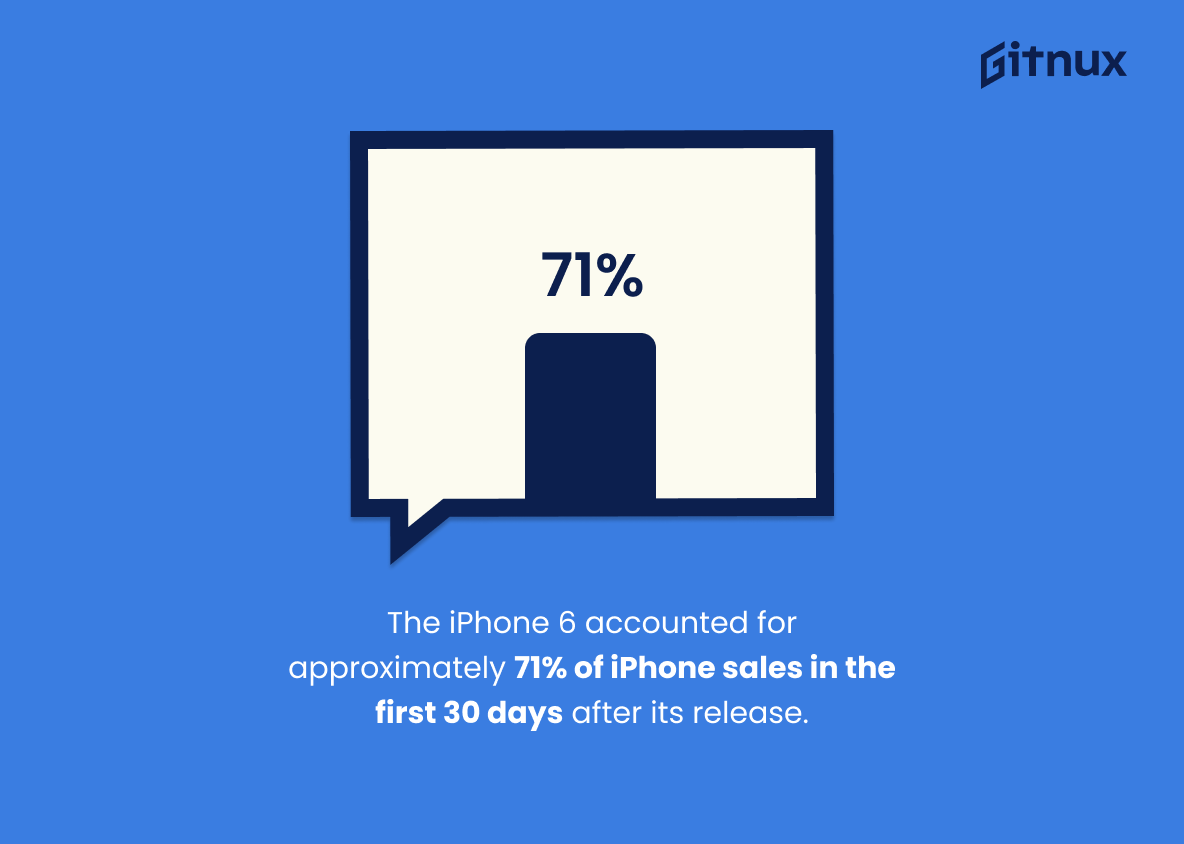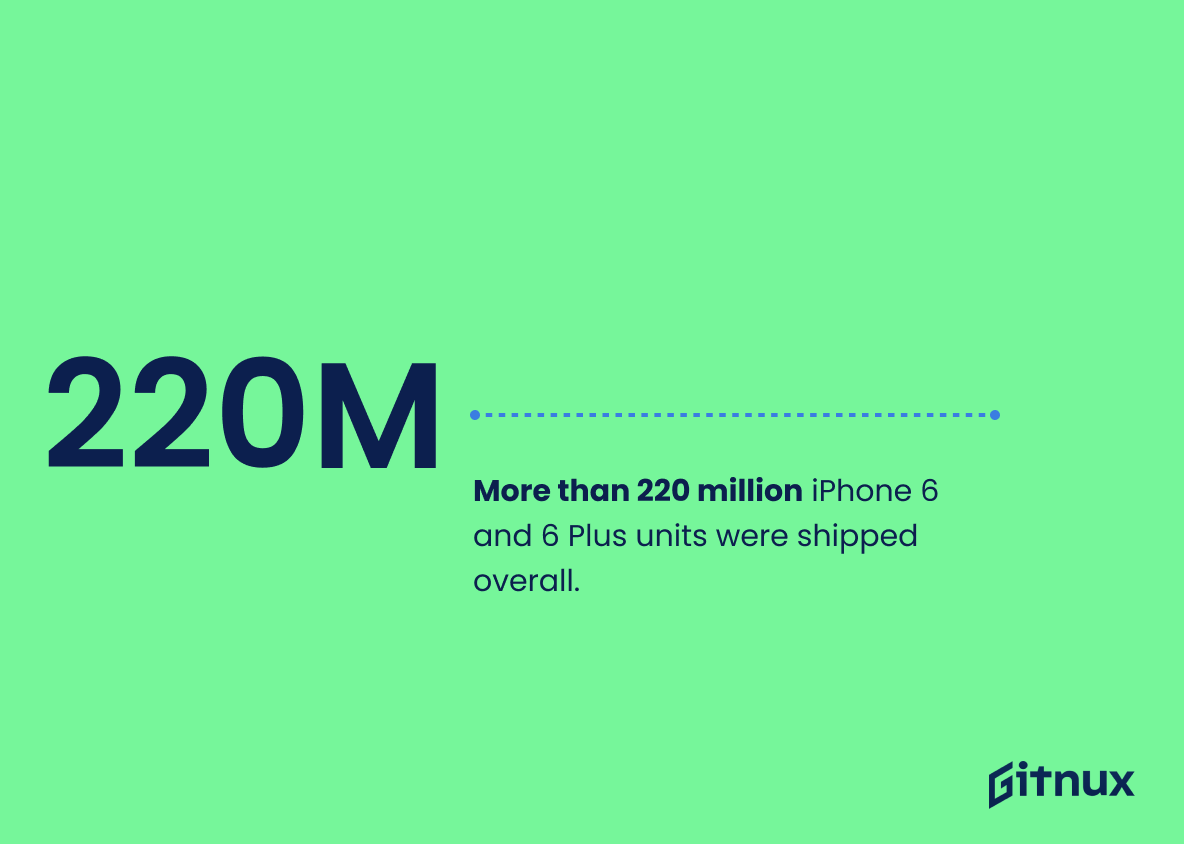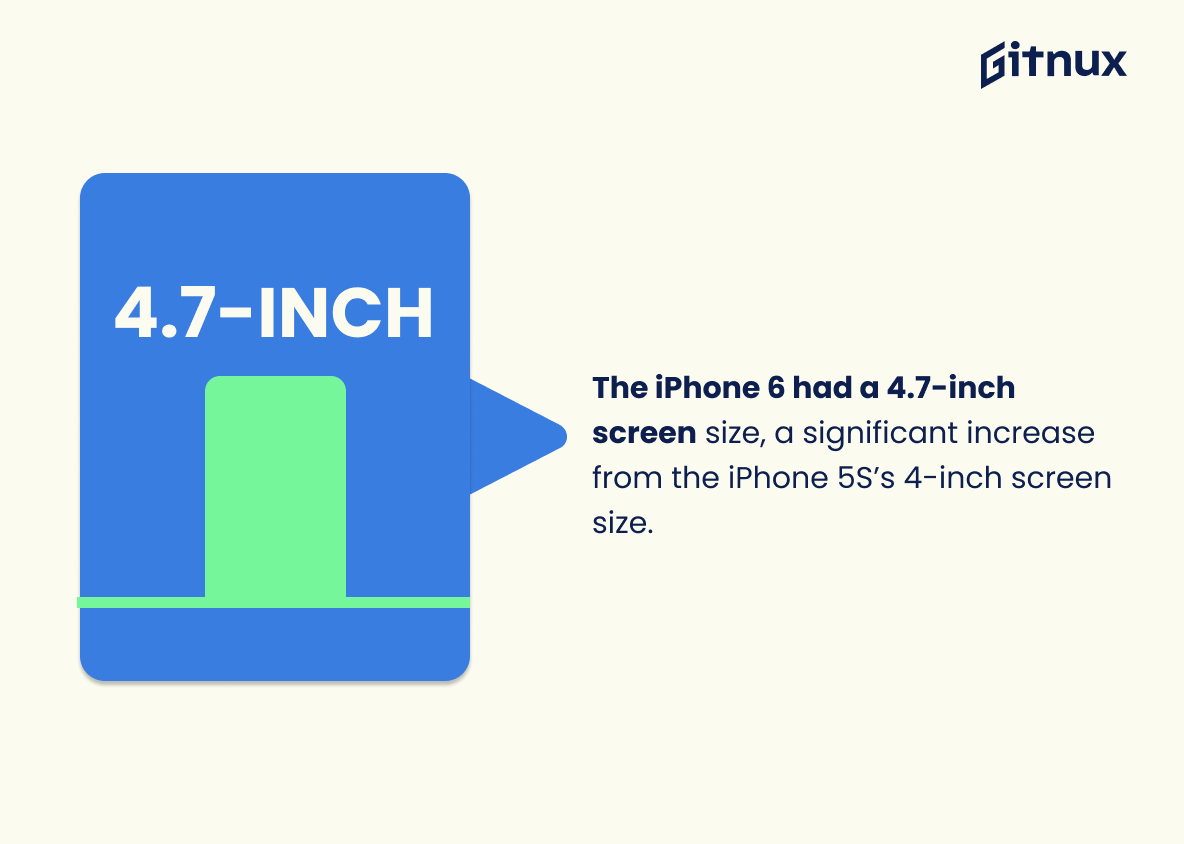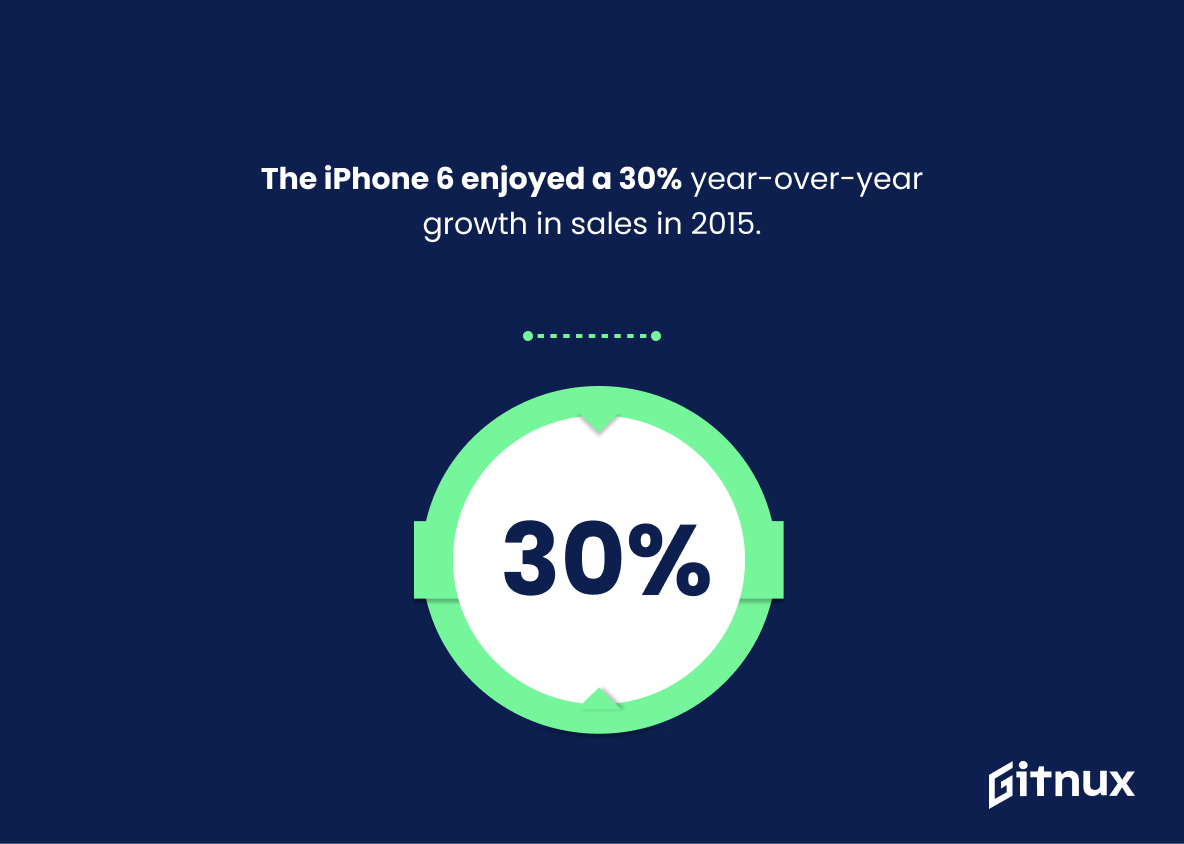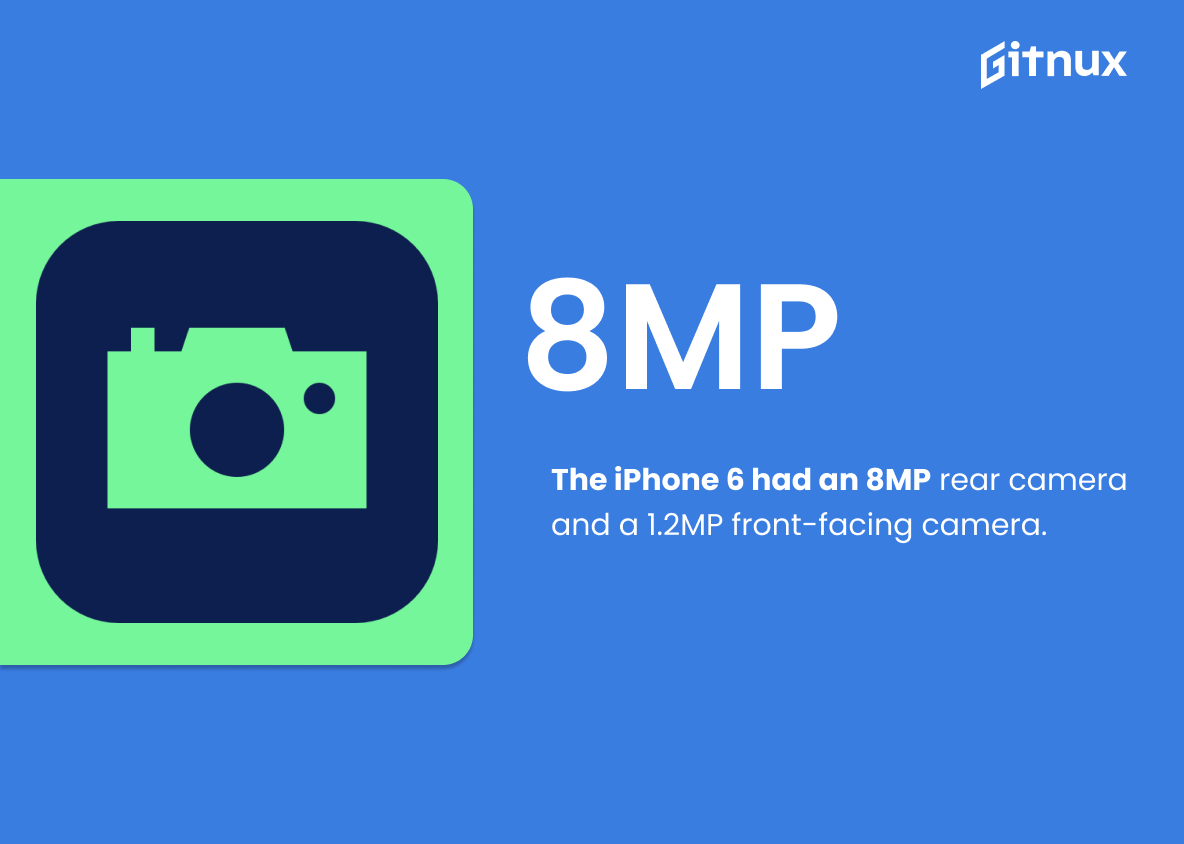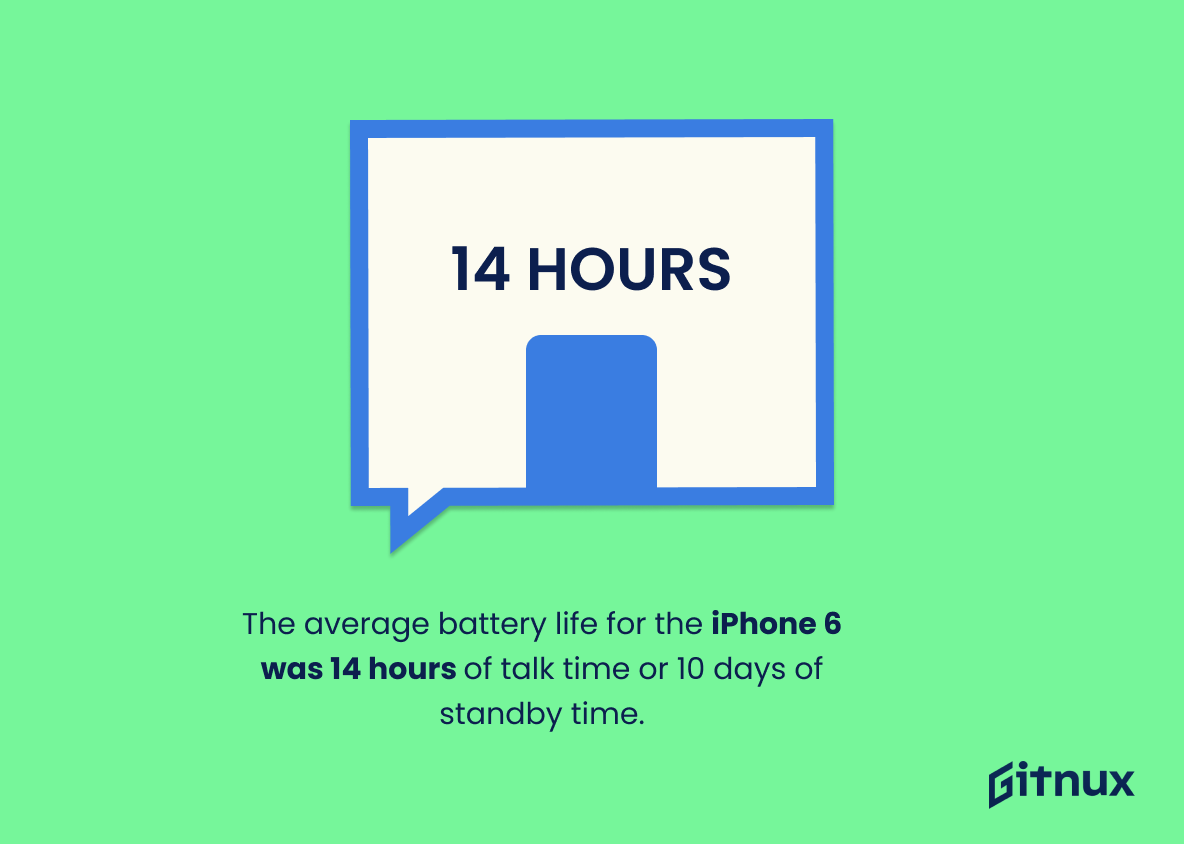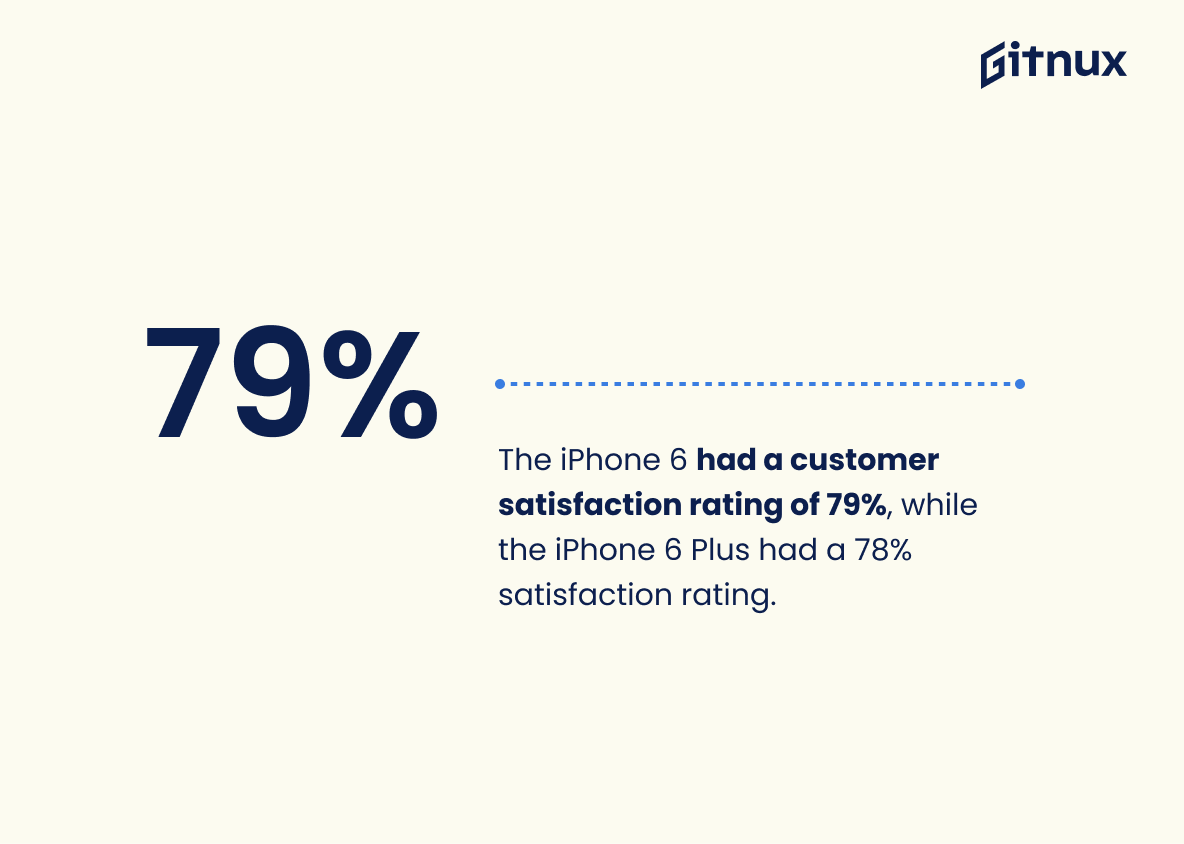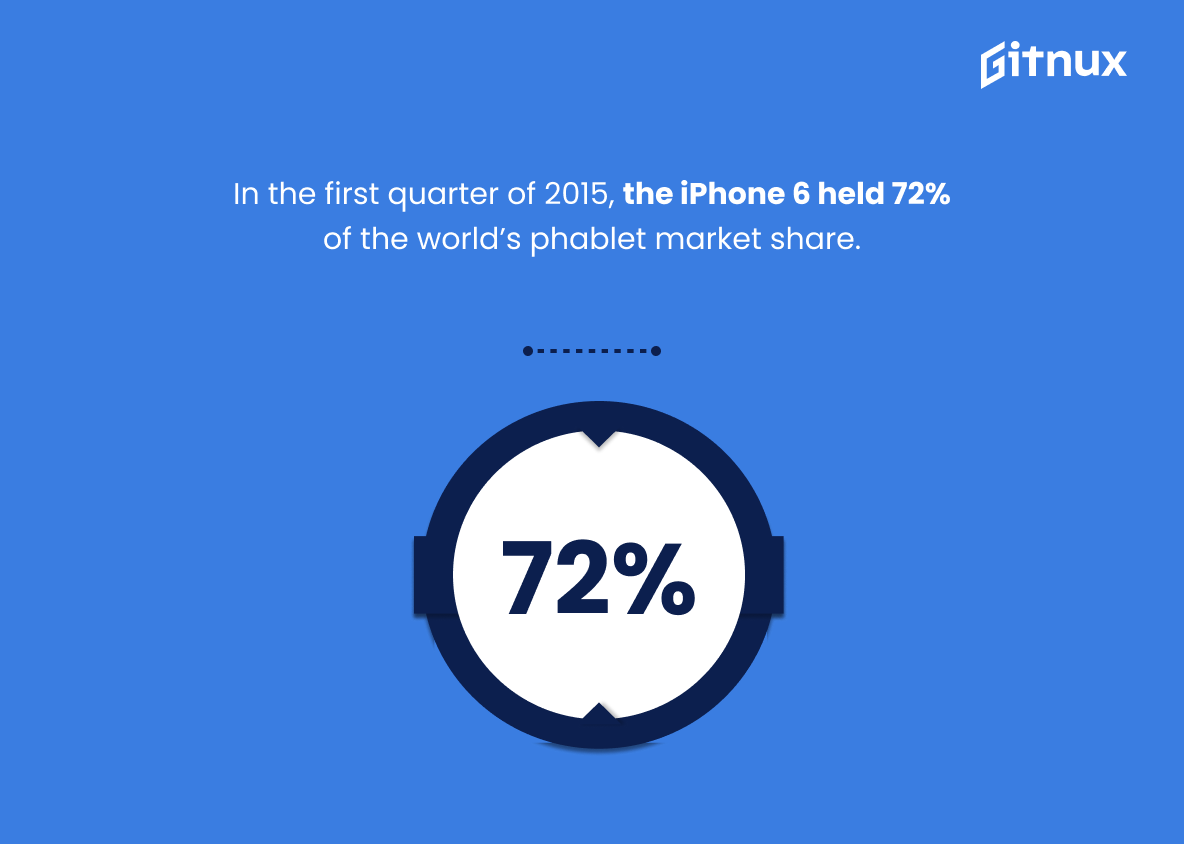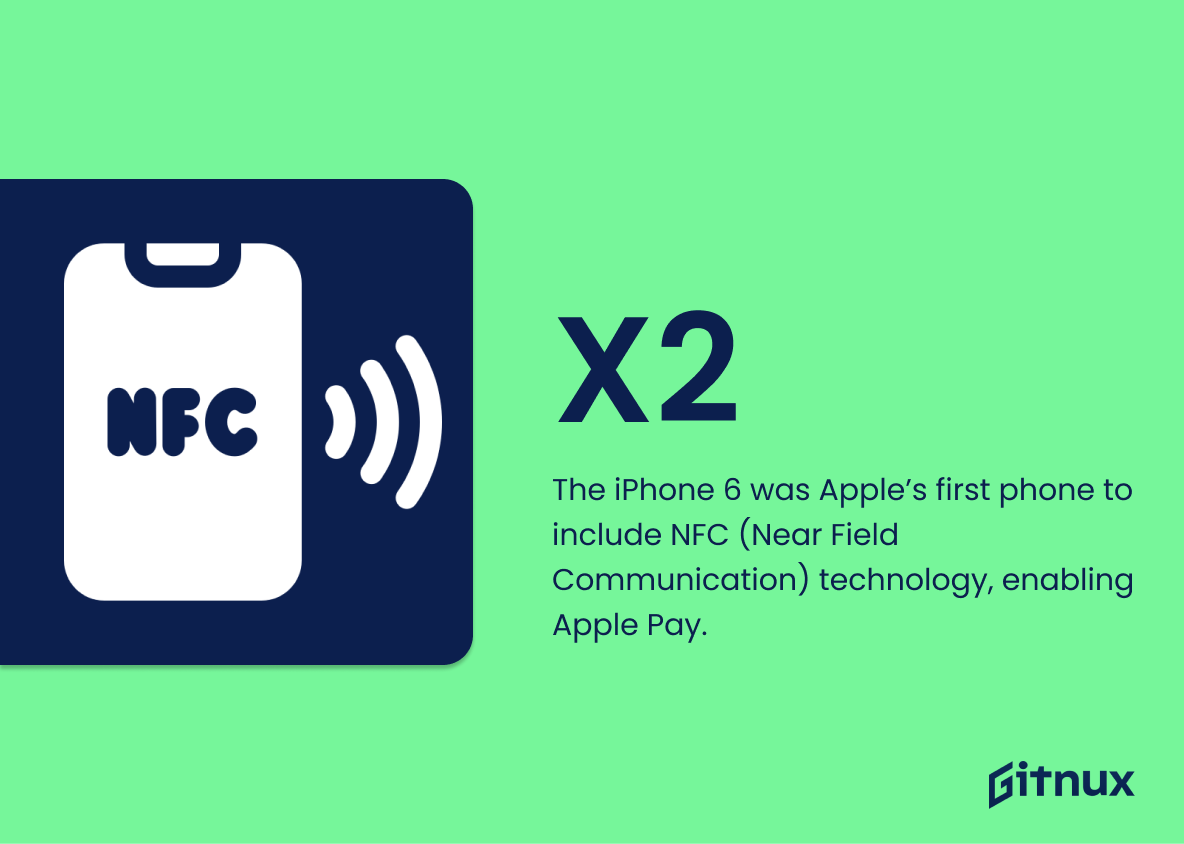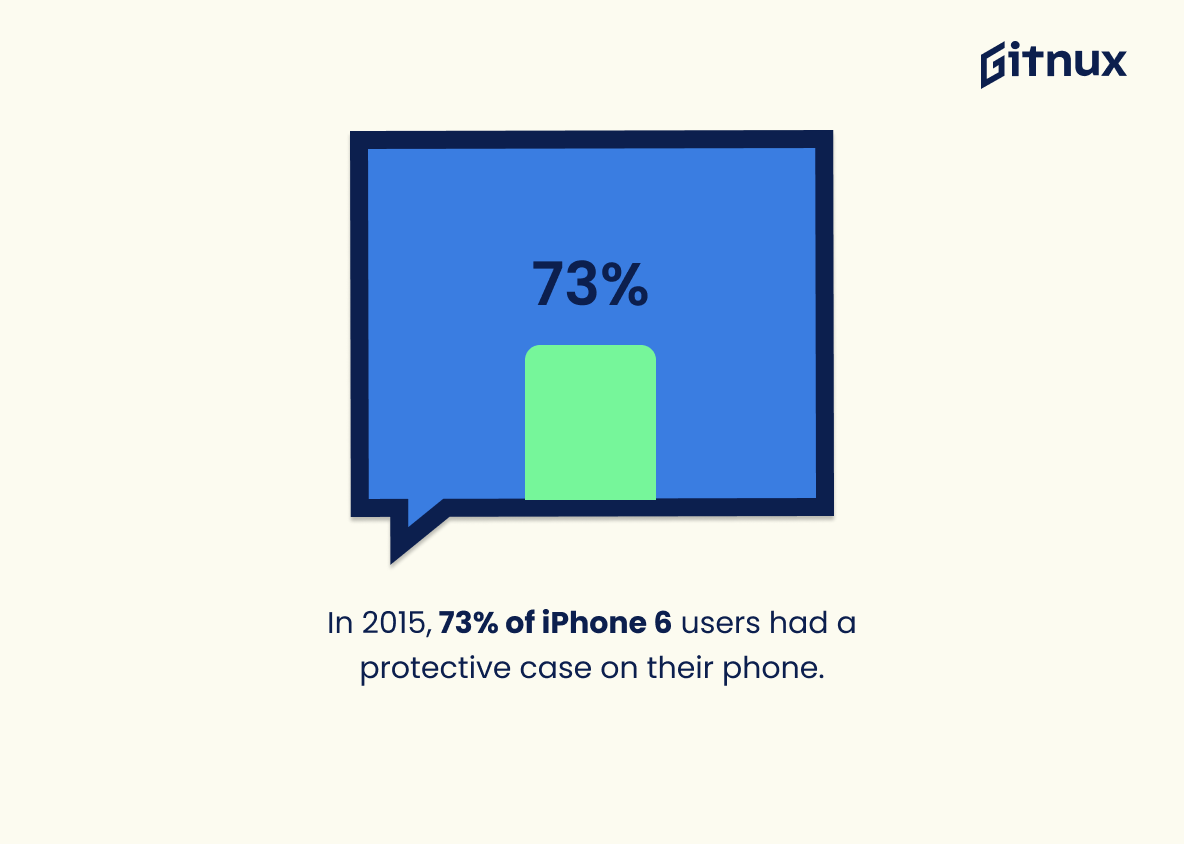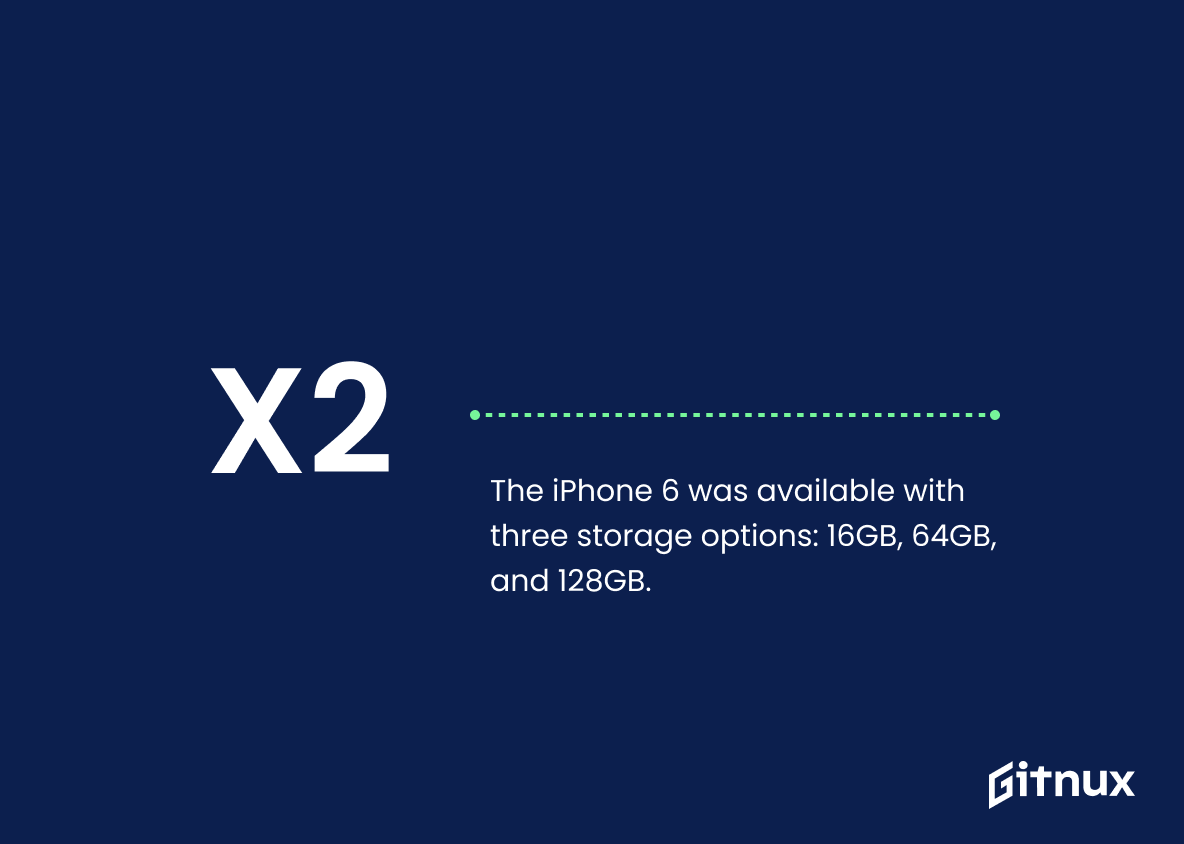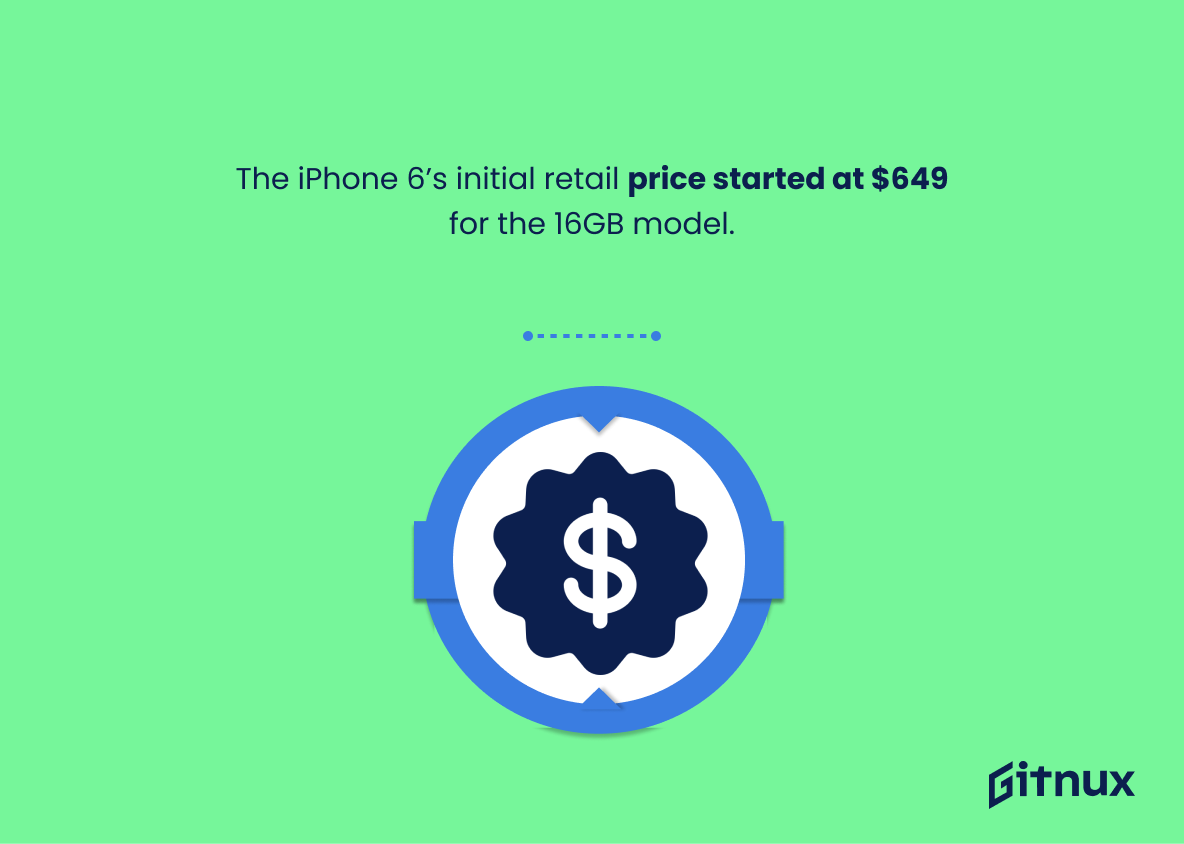It’s no secret that the iPhone 6 was a game-changer for Apple. Released in September 2014, it quickly became one of the most popular iPhones ever released and has remained so to this day. This post will explore some interesting statistics about the iPhone 6, from its initial launch sales figures to its current market share among U.S. users as of 2019. We’ll also look at how features like screen size and battery life have evolved over time with each new model release, as well as other factors such as customer satisfaction ratings and protective case usage rates since 2015. So let’s dive into these fascinating stats on one of Apple’s most successful products.
This statistic is significant in the context of a blog post about iPhone 6 Statistics because it provides insight into the current state of the iPhone 6 market. It shows that the majority of iPhone owners are still using older models, indicating that the iPhone 6 is still a popular choice among consumers. This information can be used to inform decisions about marketing strategies, product development, and other business decisions.
The iPhone 6 and 6 Plus were first launched in September 2014.
This statistic is significant in the context of a blog post about Iphone 6 Statistics as it provides a timeline for the release of the device. It serves as a reference point for the other statistics, allowing readers to understand the context in which the data was collected and the time frame in which the device has been available.
Iphone 6 Statistics Overview
The iPhone 6 sold 10 million units within the first three days of its release.
This statistic is a testament to the immense popularity of the iPhone 6, demonstrating the sheer number of people who rushed to purchase the device within the first three days of its release. It is a powerful indicator of the success of the iPhone 6, and is an important statistic to consider when discussing the device’s performance.
The iPhone 6 accounted for approximately 71% of iPhone sales in the first 30 days after its release.
This statistic is a testament to the success of the iPhone 6, demonstrating that it has been widely embraced by consumers since its release. It is an important indicator of the popularity of the device and provides insight into the success of the product. This statistic is essential to any blog post about iPhone 6 Statistics, as it provides a clear indication of the device’s success.
More than 220 million iPhone 6 and 6 Plus units were shipped overall.
This statistic is a testament to the immense success of the iPhone 6 and 6 Plus, demonstrating the widespread appeal of the device. It shows that the iPhone 6 and 6 Plus have been embraced by consumers around the world, making it one of the most popular smartphones ever released. This statistic is an important indicator of the success of the iPhone 6 and 6 Plus, and is an essential part of any blog post about iPhone 6 statistics.
The iPhone 6 had a 4.7-inch screen size, a significant increase from the iPhone 5S’s 4-inch screen size.
This statistic is of great importance when discussing the iPhone 6, as it highlights the significant increase in screen size from the iPhone 5S. This larger screen size allows for a more immersive experience when using the device, as well as providing more space for apps and other features. This is an important factor to consider when discussing the iPhone 6, as it can have a major impact on the user experience.
The iPhone 6 enjoyed a 30% year-over-year growth in sales in 2015.
This statistic is a testament to the success of the iPhone 6, demonstrating that the device has seen a significant increase in sales over the past year. It is a clear indication that the iPhone 6 has been a popular choice among consumers, and is a great example of the success of Apple’s product line. This statistic is an important part of any blog post about iPhone 6 statistics, as it provides a tangible measure of the device’s success.
The iPhone 6 had an 8MP rear camera and a 1.2MP front-facing camera.
This statistic is significant when it comes to the iPhone 6, as it speaks to the device’s ability to capture high-quality images. With an 8MP rear camera and a 1.2MP front-facing camera, the iPhone 6 is capable of taking stunning photos and videos, making it a great choice for those who want to capture life’s special moments.
The average battery life for the iPhone 6 was 14 hours of talk time or 10 days of standby time.
This statistic is an important indicator of the iPhone 6’s performance, as it provides an insight into how long the device can be used before needing to be recharged. Knowing the battery life of the iPhone 6 can help potential buyers decide if the device is suitable for their needs, as well as help existing users plan their usage accordingly.
The iPhone 6 had a customer satisfaction rating of 79%, while the iPhone 6 Plus had a 78% satisfaction rating.
This statistic is significant in the context of a blog post about Iphone 6 Statistics because it provides insight into how customers feel about the two models. It can help readers decide which model is best for them, as the higher satisfaction rating of the iPhone 6 may indicate that it is the better choice. Additionally, the difference in satisfaction ratings between the two models can help readers understand the advantages and disadvantages of each.
46% of iPhone 6 users experienced at least one dropped call per week, compared to 55% of users with other models.
This statistic is significant in the context of a blog post about iPhone 6 Statistics because it demonstrates that the iPhone 6 is more reliable than other models when it comes to dropped calls. This could be an important factor for potential buyers to consider when deciding which phone to purchase.
In the first quarter of 2015, the iPhone 6 held 72% of the world’s phablet market share.
This statistic is a testament to the success of the iPhone 6 in the phablet market, demonstrating its dominance in the industry. It is a key indicator of the phone’s popularity and success, and is an important statistic to consider when discussing the iPhone 6’s performance.
The iPhone 6 was Apple’s first phone to include NFC (Near Field Communication) technology, enabling Apple Pay.
This statistic is significant in the context of a blog post about iPhone 6 Statistics because it highlights a major advancement in the phone’s technology. NFC technology enabled Apple Pay, which revolutionized the way people pay for goods and services. This advancement was a major selling point for the iPhone 6 and helped to make it one of the most popular smartphones of its time.
In 2015, 73% of iPhone 6 users had a protective case on their phone.
This statistic is significant in the context of a blog post about iPhone 6 Statistics because it demonstrates the importance of protecting one’s phone. It shows that the majority of iPhone 6 users recognize the need to safeguard their device from potential damage, and that they are taking the necessary steps to do so.
The iPhone 6 was available with three storage options: 16GB, 64GB, and 128GB.
This statistic is significant in the context of a blog post about Iphone 6 Statistics because it provides insight into the range of options available to consumers when purchasing the device. By offering three different storage options, Apple gave customers the ability to choose the device that best suited their needs and budget.
The iPhone 6 was 6.9mm thin, compared to the iPhone 5S’s thickness of 7.6mm.
This statistic is significant in the context of a blog post about iPhone 6 Statistics because it highlights the impressive feat of engineering that Apple achieved in making the iPhone 6 thinner than its predecessor. This speaks to the company’s commitment to innovation and their ability to continually improve their products.
The iPhone 6’s initial retail price started at $649 for the 16GB model.
This statistic is significant in the context of a blog post about Iphone 6 Statistics because it provides a baseline for the cost of the device. It gives readers an idea of how much they can expect to pay for the device, and can be used to compare the cost of the device to other models or versions of the Iphone. Additionally, it can be used to track the cost of the device over time, and to compare the cost of the Iphone 6 to other devices on the market.
Conclusion
The iPhone 6 was a revolutionary device for Apple, with its larger screen size and improved features. It sold 10 million units within the first three days of its release, accounting for 71% of all iPhone sales in the first 30 days after launch. As of September 2019, 74% of U.S. iPhone owners were still using an iPhone 6 or older model – testament to how popular this phone has been over the years since it was released in 2014. The thin form factor and NFC technology enabled by the device have made it one of Apple’s most successful products ever; more than 220 million units have been shipped worldwide so far.
References
0. – https://www.iphonelife.com
1. – https://www.theverge.com
2. – https://www.forbes.com
3. – https://www.apple.com
4. – https://www.macworld.com
5. – https://www.macworld.co.uk
6. – https://www.businessinsider.com
7. – https://www.marketwatch.com
8. – https://www.techadvisor.co.uk
9. – https://www.cnet.com
10. – https://www.zdnet.com
11. – https://www.venturebeat.com
12. – https://www.statista.com
13. – https://www.en.wikipedia.org
14. – https://www.parksassociates.com
15. – https://www.gsmarena.com

